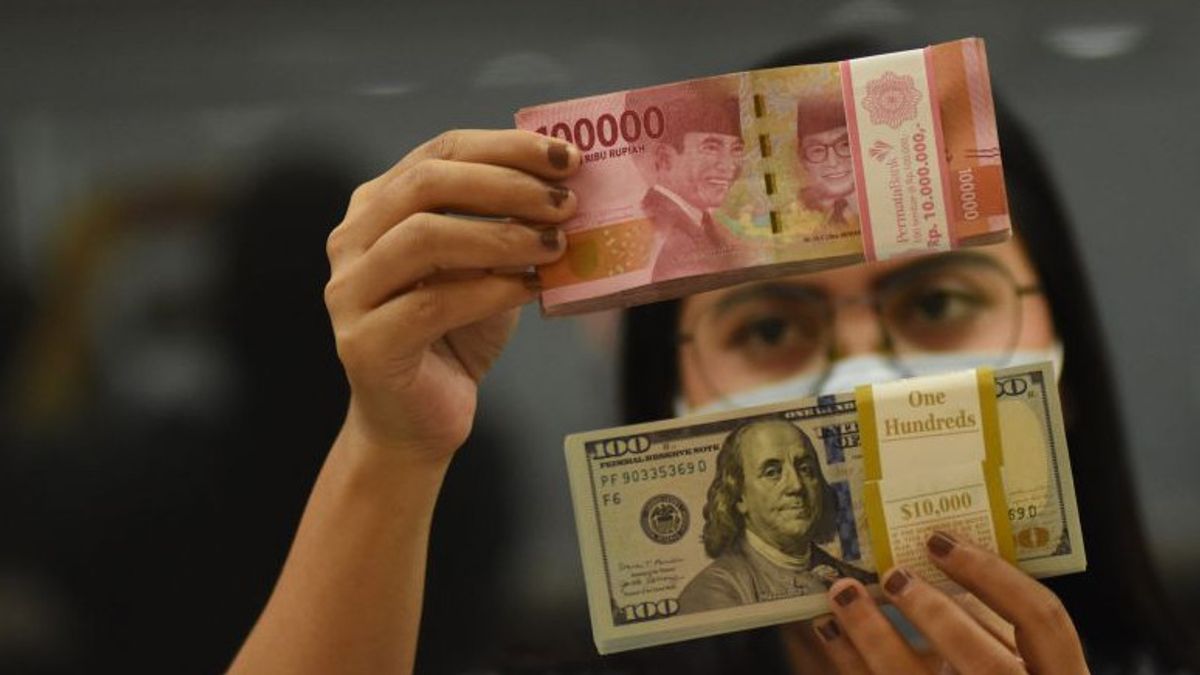NEW YORK - The United States (US) dollar edged down against a basket of other major currencies in late trading Thursday (Friday morning, western Indonesia time), and recorded the second day of losses.
The trigger was as markets were sorting through a series of central bank policy statements for clues about interest rate differentials and impending support for their economies.
The dollar index, which measures the greenback against a basket of six major rivals, was down 0.48 percent at 96.0498 in New York afternoon trade, after falling as much as 0.50 percent in the morning.
The losses came against currencies associated with more risk-taking, as well as against the safe-haven Japanese yen and Swiss franc.
In 24 hours, the dollar index fell 1.1 percent, starting from a spike when the US Federal Reserve posted a new policy statement on Wednesday (15/12), dropping to its lowest level shortly after the European Central Bank (ECB) and the UK central bank (BoE) made the announcement on Thursday 16 December. "What an amazing day," said Marc Chandler, Head of Market Strategy at Bannockburn Global Forex.
The British pound jumped as much as 0.8 percent against the US dollar, after Britain's central bank became the first major central bank to raise interest rates since the start of the pandemic.
The euro rose more than 0.5 percent after Europe's central bank said it would rein in stimulus a bit.
The ECB's soft move contrasts with the more hawkish tone of the Fed, which has said it will end its pandemic-era bond buying in March, paving the way for three rate hikes expected in 2022.
The pound was last up 0.4 percent to $1.3314 and the euro was up 0.3 percent to $1.1332.
The changes suggest that some traders have moved to cover short positions against the euro and sterling, Chandler said.
SEE ALSO:
The euro-dollar exchange rate also appears to be following changes in the spread between yields on two-year US bonds and German government securities, Chandler said, adding that two-year yields are highly sensitive to the central bank's interest rate policy.
That spread, which has been trending more broadly this year with the Fed's relative hawkish stance towards the ECB, narrowed slightly on Thursday, December 16 to support the euro.
The differing paths taken by major central banks underscore deep uncertainty about how the fast-spreading Omicron variant will hit the economy, and about how much each must do to counter spikes in inflation, which are hitting hard in the United States and Britain, but less so. so hard in Europe.
Central banks included a dovish element in their statements, which gave markets confidence to move towards riskier trade without too much fear of a recession from tighter monetary policy.
On the cryptocurrency market, bitcoin fell 2.0 percent to $48,011.
The English, Chinese, Japanese, Arabic, and French versions are automatically generated by the AI. So there may still be inaccuracies in translating, please always see Indonesian as our main language. (system supported by DigitalSiber.id)


















